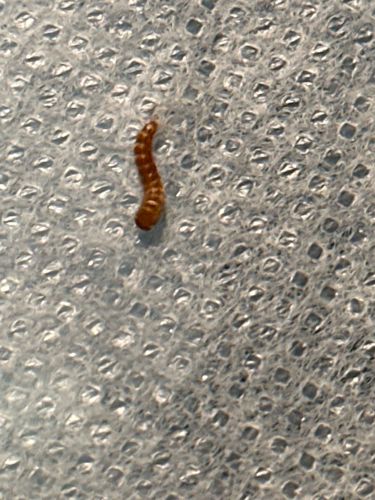Mealworm (larval stage)
Scientific Name: Tenebrio molitor
Order & Family: Order: Coleoptera, Family: Tenebrionidae
Size: Larvae typically range from 2.5 cm to 3 cm (1 to 1.2 inches) in length, though can be smaller or larger depending on age and feeding conditions.

Natural Habitat
Mealworms are found globally and thrive in dark, undisturbed places where dry food sources are available. This includes grain stores, pantries, barns, and under logs or rocks in natural environments.
Diet & Feeding
Mealworms are primarily scavengers and detritivores. In nature, they feed on decaying plant and animal matter, fungi, and grains. In domestic settings, they are known to eat flour, cereals, oats, pet food, and other pantry items.
Behavior Patterns
Mealworms undergo complete metamorphosis, passing through egg, larva, pupa, and adult stages. The larval stage, shown in the image, is the longest. They are nocturnal and prefer dark, moist environments. When disturbed, they may play dead or curl up.
Risks & Benefits
Risks: Can be considered pantry pests if found in food storage, contaminating dry goods. Can cause allergic reactions in some individuals through skin contact or inhalation of dust from infested products. Benefits: Widely used as feeders for pets like reptiles, birds, and fish due to their high protein content. Also used in scientific research and for composting organic waste. Potential for human consumption as an alternative protein source.
Identified on: 8/24/2025